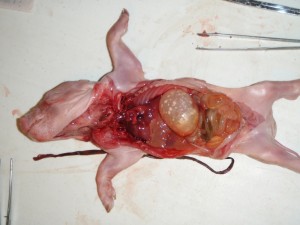
Happy Australian Bacon Week to you! This week here at the Chop Shop it’s going to be all about the bacon.
Australian Bacon Week is an initiative of Australian Pork to promote home grown, home-smoked bacon and raise awareness about the importing of frozen pork products.
The statistics on the Australian Pork website are pretty staggering:
- over 70% of smallgoods in Australia are made from imported pork
- 65% of bacon sold in Australia is made from imported pork
- $8.5 million worth of pork is imported into Australia every week
Imported pork products come from countries with heavily subsidised agricultural industries so you would think that they would be winning the price war, but the pork and smallgoods that we buy from our local Gympie butchers is the same price or cheaper than the imported product from the supermarket.
The winners of the awards for Australia’s best bacon have been announced – check out the website and see if there is a winning butcher near you.
So, be a Porkstar this week and bring home the bacon from a local supplier or, if you can’t get to the butcher, look for the pink Australian Pork logo on the package and wake up smelling the bacon that came from a pig that grew up near you.
![]()






